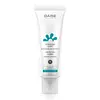What's inside
What's inside
 Key Ingredients
Key Ingredients

 Benefits
Benefits

 Concerns
Concerns

 Ingredients Side-by-side
Ingredients Side-by-side

Water
Skin ConditioningC12-20 Acid PEG-8 Ester
EmulsifyingGlycerin
HumectantButyl Methoxydibenzoylmethane
UV AbsorberHomosalate
Skin ConditioningOctocrylene
UV AbsorberDimethicone
EmollientDiethylhexyl Carbonate
EmollientOlus Oil
EmollientCocoglycerides
EmollientSilica
AbrasivePanthenol
Skin ConditioningPersea Gratissima Oil
Skin ConditioningSodium PCA
HumectantUrea
BufferingAllantoin
Skin ConditioningGlutamic Acid
HumectantGlycine
BufferingLysine
Skin ConditioningGluconolactone
Skin ConditioningGlucose
HumectantLactic Acid
BufferingHydrolyzed Jojoba Esters
Skin ConditioningSqualane
EmollientTocopheryl Acetate
AntioxidantTocopherol
AntioxidantAloe Barbadensis Leaf Juice Powder
Skin ConditioningHydroxyethyl Acrylate/Sodium Acryloyldimethyl Taurate Copolymer
Emulsion StabilisingDimethiconol
EmollientParfum
MaskingXanthan Gum
EmulsifyingEthylhexylglycerin
Skin ConditioningPolysorbate 60
EmulsifyingSorbitan Isostearate
EmulsifyingPantolactone
HumectantPhenoxyethanol
PreservativeDisodium EDTA
Sodium Hydroxide
BufferingPotassium Sorbate
PreservativeSodium Benzoate
MaskingWater, C12-20 Acid PEG-8 Ester, Glycerin, Butyl Methoxydibenzoylmethane, Homosalate, Octocrylene, Dimethicone, Diethylhexyl Carbonate, Olus Oil, Cocoglycerides, Silica, Panthenol, Persea Gratissima Oil, Sodium PCA, Urea, Allantoin, Glutamic Acid, Glycine, Lysine, Gluconolactone, Glucose, Lactic Acid, Hydrolyzed Jojoba Esters, Squalane, Tocopheryl Acetate, Tocopherol, Aloe Barbadensis Leaf Juice Powder, Hydroxyethyl Acrylate/Sodium Acryloyldimethyl Taurate Copolymer, Dimethiconol, Parfum, Xanthan Gum, Ethylhexylglycerin, Polysorbate 60, Sorbitan Isostearate, Pantolactone, Phenoxyethanol, Disodium EDTA, Sodium Hydroxide, Potassium Sorbate, Sodium Benzoate
Water
Skin ConditioningGlycerin
HumectantIsocetyl Stearate
EmollientPropanediol
SolventCetearyl Alcohol
EmollientAlcohol Denat.
AntimicrobialCetyl Esters
EmollientButyrospermum Parkii Butter
Skin ConditioningPentylene Glycol
Skin ConditioningPolyglyceryl-3 Methylglucose Distearate
EmulsifyingMannose
HumectantSodium Polyacrylate
AbsorbentSodium PCA
HumectantSalicylic Acid
MaskingSodium Hyaluronate
HumectantCaprylyl Glycol
EmollientCitric Acid
BufferingParfum
MaskingIngredients Explained
These ingredients are found in both products.
Ingredients higher up in an ingredient list are typically present in a larger amount.
Glycerin is already naturally found in your skin. It helps moisturize and protect your skin.
A study from 2016 found glycerin to be more effective as a humectant than AHAs and hyaluronic acid.
As a humectant, it helps the skin stay hydrated by pulling moisture to your skin. The low molecular weight of glycerin allows it to pull moisture into the deeper layers of your skin.
Hydrated skin improves your skin barrier; Your skin barrier helps protect against irritants and bacteria.
Glycerin has also been found to have antimicrobial and antiviral properties. Due to these properties, glycerin is often used in wound and burn treatments.
In cosmetics, glycerin is usually derived from plants such as soybean or palm. However, it can also be sourced from animals, such as tallow or animal fat.
This ingredient is organic, colorless, odorless, and non-toxic.
Glycerin is the name for this ingredient in American English. British English uses Glycerol/Glycerine.
Learn more about GlycerinParfum is a catch-all term for an ingredient or more that is used to give a scent to products.
Also called "fragrance", this ingredient can be a blend of hundreds of chemicals or plant oils. This means every product with "fragrance" or "parfum" in the ingredients list is a different mixture.
For instance, Habanolide is a proprietary trade name for a specific aroma chemical. When used as a fragrance ingredient in cosmetics, most aroma chemicals fall under the broad labeling category of “FRAGRANCE” or “PARFUM” according to EU and US regulations.
The term 'parfum' or 'fragrance' is not regulated in many countries. In many cases, it is up to the brand to define this term.
For instance, many brands choose to label themselves as "fragrance-free" because they are not using synthetic fragrances. However, their products may still contain ingredients such as essential oils that are considered a fragrance by INCI standards.
One example is Calendula flower extract. Calendula is an essential oil that still imparts a scent or 'fragrance'.
Depending on the blend, the ingredients in the mixture can cause allergies and sensitivities on the skin. Some ingredients that are known EU allergens include linalool and citronellol.
Parfum can also be used to mask or cover an unpleasant scent.
The bottom line is: not all fragrances/parfum/ingredients are created equally. If you are worried about fragrances, we recommend taking a closer look at an ingredient. And of course, we always recommend speaking with a professional.
Learn more about ParfumSodium PCA is the sodium salt of pyroglutamic acid. It is naturally occurring in our skin's natural moisturizing factors where it works to maintain hydration.
The PCA stands for pyrrolidone carboxylic acid, a natural amino acid derivative.
This ingredient has skin conditioning, anti-inflammatory, and humectant properties. Humectants help hydrate your skin by drawing moisture from the air. This helps keep your skin moisturized.
Learn more about Sodium PCAWater. It's the most common cosmetic ingredient of all. You'll usually see it at the top of ingredient lists, meaning that it makes up the largest part of the product.
So why is it so popular? Water most often acts as a solvent - this means that it helps dissolve other ingredients into the formulation.
You'll also recognize water as that liquid we all need to stay alive. If you see this, drink a glass of water. Stay hydrated!
Learn more about Water